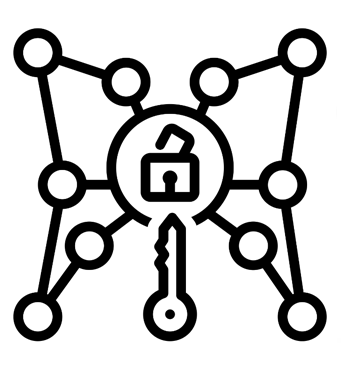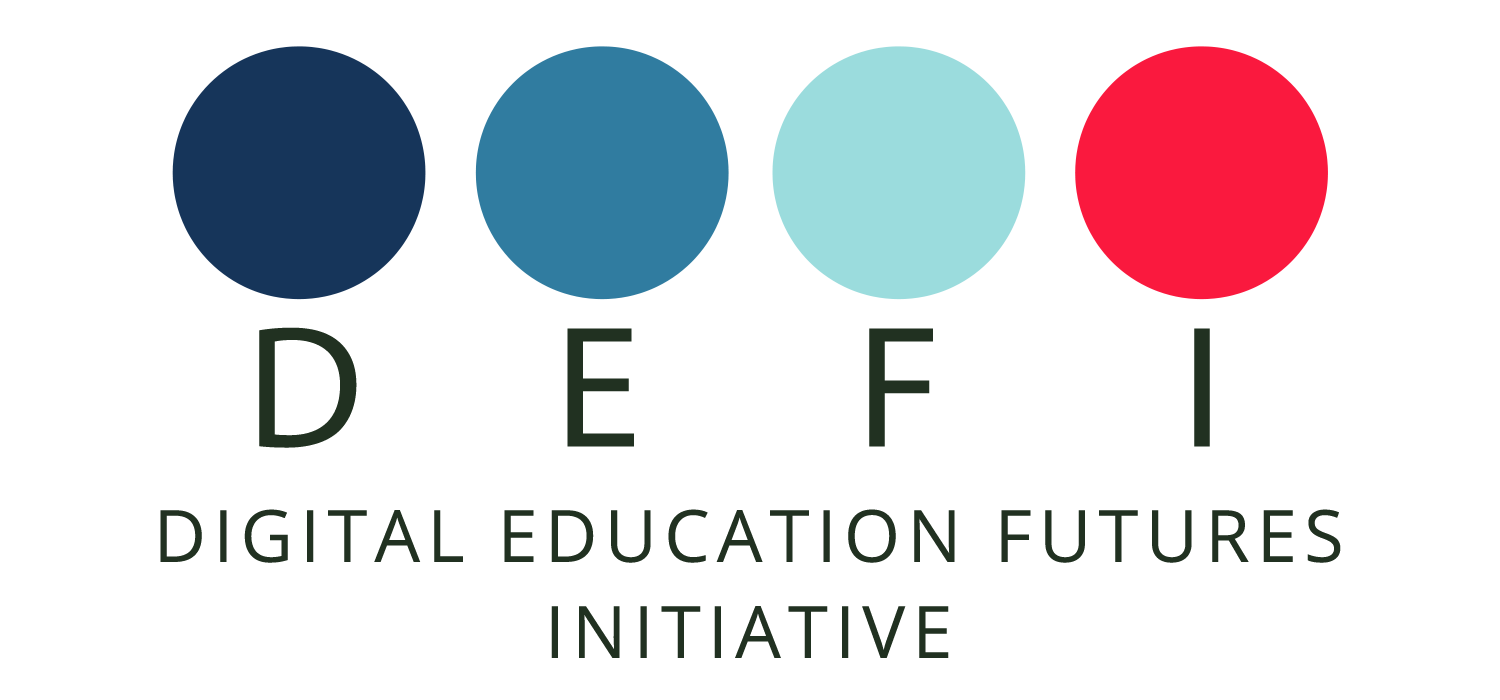Our guest blogger is DEFI webinar presenter, Meaghan Brugha, who is an experienced Teacher Professional Development (TPD) researcher. In her latest blog she outlines key considerations in creating standout technology enhanced TPD.

A few months ago, DEFI and CEDiR hosted a webinar that I was part of entitled Designing and Facilitating Effective Online and Blended Teacher Professional Development: A Discussion. With a continued focus in the sector on identifying ingredients for successful technology-enhanced TPD courses, I’ve found myself reflecting on some of the areas of our discussion. The webinar classically felt far too short to respond to all of the excellent questions posed by participants and my fellow panellists, and so I thought I would revisit the discussion through this post, which I hope will stoke further conversation and reflection. Please keep hold of your comments (especially the provocative ones! My favourite!) because you’re very welcome to share your opinions, insights and experiences in response to this blog post.
The full webinar is available here if you were unable to attend and would like to view it. The panellists were Farah Ahmed, Sara Hennessy and me, and you can find links to our research projects at the bottom of this post that we drew on throughout the webinar. A few main threads came up during our discussion, which are worth thinking through further. I’ve grouped these thematically, but note that this is not an exhaustive list of considerations for designing and facilitating technology-enhanced TPD. Rather, these are areas that I’ve been reflecting on since our webinar and that I believe are worth highlighting.
 Don’t lead with the tech: First (and I always like to mention this first), technology is not a silver bullet for enacting change. Providing teachers with access to an online learning platform alone will not result in an improvement in their students’ learning outcomes. Pedagogy should come first; the needs of the community for whom the technology is being provided should come first.
Don’t lead with the tech: First (and I always like to mention this first), technology is not a silver bullet for enacting change. Providing teachers with access to an online learning platform alone will not result in an improvement in their students’ learning outcomes. Pedagogy should come first; the needs of the community for whom the technology is being provided should come first.
The actual technology including all those fancy bits of functionality (although they’re fun and should indeed be leveraged!) should come last. Technology should also not seek to replace in-person alternatives to learning as they will likely have different objectives that need to be articulated before the selection of a format or platform. And regardless of the platform (whether it’s online, blended, in-person or a variation therein), the tech should be selected according to the context and in conversation with potential participants.
 Buy-in is hard to achieve online, but it’s not impossible. I’m thinking about buy-in in two different ways: buy-in for the pedagogy the course strives to impart, and buy-in for engaging in and completing the online course itself. Regarding buy-in for the pedagogy, courses can’t assume that everyone who registers is automatically sold on the potential impact of the content.
Buy-in is hard to achieve online, but it’s not impossible. I’m thinking about buy-in in two different ways: buy-in for the pedagogy the course strives to impart, and buy-in for engaging in and completing the online course itself. Regarding buy-in for the pedagogy, courses can’t assume that everyone who registers is automatically sold on the potential impact of the content.
I found particular success through using reflective activities for participants to have a structured space to assess their practice and the ways in which the course content may apply (more on these activities and others in a theme below).
I also found success in having local facilitators as pedagogical champions. The first Massive Open Online Course (MOOC) I designed was a space for local facilitators, which really bridges that online/offline divide. By facilitators, I refer to practitioners who take on a leadership role in their setting whereby they coordinate and support their colleagues in developing their practice.
The course provided guidance and tools for achieving buy-in with their colleagues, as well as opportunities for them to share successes and challenges with their course peers. Having a colleague describe the pedagogy, and being able to do it in a contextualised way according to the setting, is much more likely to result in its uptake than if I (a person they’ve never met who isn’t from the same setting) tried to convince them that dialogic pedagogy is something they should spend their limited time learning about and using in their practice.
Regarding buy-in for the engagement and completion of the MOOC itself, the inclusion of participant voice in the course design goes a long way to help with this, as does meaningful accreditation, and having opportunities to connect with other practitioners globally.
 Collaborate with key stakeholders throughout all phases of the intervention: One seminar audience member asked how we ensure that teacher needs remain front and centre in our course design and facilitation. I am unwavering in my commitment to the use of user centred design and collaboration with participants and key sector stakeholders from the conception of a course.
Collaborate with key stakeholders throughout all phases of the intervention: One seminar audience member asked how we ensure that teacher needs remain front and centre in our course design and facilitation. I am unwavering in my commitment to the use of user centred design and collaboration with participants and key sector stakeholders from the conception of a course.
Who this includes will of course depend on the course, but it would likely include learners (i.e. potential participants), community members, government stakeholders and other course providers. Regardless, this collaboration should continue through the different iterations of the intervention and beyond.
 Position access considerations centrally in the design, facilitation and evaluation of the course: This comes from a design principle in our research, which asks who the participants really are and whether there are any differences in their ability to meaningfully participate and engage in the course. By access, I’m referring to a number of areas, which should be unpacked separately during the design, facilitation and evaluation of the course.
Position access considerations centrally in the design, facilitation and evaluation of the course: This comes from a design principle in our research, which asks who the participants really are and whether there are any differences in their ability to meaningfully participate and engage in the course. By access, I’m referring to a number of areas, which should be unpacked separately during the design, facilitation and evaluation of the course.
It can refer to electricity, internet connectivity, device availability, gender, disability, affordability, digital skills and prior experience in online learning, and prior experience with the subject matter to name a few. Doing an in-depth context analysis and utilising user-centred design through collaborating with potential participants from the outset are necessary practices.
Success has also been seen in using technology that participants already use and have access to (e.g. use WhatsApp instead of creating a new discussion-based platform if that’s what is already used by teachers in the community), which is particularly relevant for blended programmes.
 Create opportunities for reflection, creation, and contextualisation: If I was asked for content design considerations that enhance impact to teacher practice, these are the three areas I would highlight:
Create opportunities for reflection, creation, and contextualisation: If I was asked for content design considerations that enhance impact to teacher practice, these are the three areas I would highlight:
(1) Include reflective activities throughout the course, where possible – e.g. videos, weekly tasks, discussion forum contributions. Through reflecting (both independently and collectively) on the materials, practitioners will be better equipped to apply the theory to their settings and daily practice.
(2) I found particular success through including opportunities for participants to create and share artefacts. This can take different forms but examples from my course series include reflective reports, inquiry objectives and findings, and facilitation plans and models. This sought to enhance the relevance of the content, the ability to meaningfully connect with other participants, and accountability.
(3) Having an adaptive and responsive course to participant needs, including resources that can easily be contextualised (with guidance on how to do so) goes a long way to sustaining impact. This means that international course content can be made relevant to local contexts, for example through offering a range of scaffolding or support; providing a library with additional open access resources; and/or ensuring that the monitoring and evaluation process collects accurate and meaningful information from participants in order for positive adaptations to be made.
These strategies additionally address a question from a seminar audience member who asked how we can make research accessible and digestible for teachers who are already under pressure in terms of time and workload. Research is perhaps most digestible when there are opportunities to contextualise it to their own practice through reflection, and when they can engage in a dialogue with other practitioners about the subject area.
 Build in monitoring and evaluation mechanisms during the design of the course. Feedback needs to be systematic and built-in to the course structure while also allowing for its own adaptations where required, which is one way to ensure the meaningful inclusion of participant voices. I would suggest a mixed methods approach for this, leveraging technology to collect data on user analytics (e.g. scroll maps that indicate where participants spend the most/least amount of time on the course), as well as collecting more specific demographic and engagement data via questionnaires and interviews or focus group discussions if appropriate and possible. I would also suggest that EdTech interventions need more evidence on access-related constraints and opportunities in particular. Related to the collection of data, careful considerations need to be made regarding data protection and the collection of personal data.
Build in monitoring and evaluation mechanisms during the design of the course. Feedback needs to be systematic and built-in to the course structure while also allowing for its own adaptations where required, which is one way to ensure the meaningful inclusion of participant voices. I would suggest a mixed methods approach for this, leveraging technology to collect data on user analytics (e.g. scroll maps that indicate where participants spend the most/least amount of time on the course), as well as collecting more specific demographic and engagement data via questionnaires and interviews or focus group discussions if appropriate and possible. I would also suggest that EdTech interventions need more evidence on access-related constraints and opportunities in particular. Related to the collection of data, careful considerations need to be made regarding data protection and the collection of personal data.
As always, I invite your feedback and comments regarding these reflections! You can respond below this post, or you can also get in touch with me directly (see email address included below).
Sincere and very big thank yous to Dr Alison Twiner at CEDiR and Jude Hannam at DEFI for their support! Note that this blog post is also hosted on the Cambridge Teacher Research Exchange – Camtree – website. This theme of designing for effective technology-enhanced TPD will be revisited in future webinars so be sure to look out for the next one!
Links for further exploration:
Digital Education Futures Initiative (DEFI)
DEFI’s vision is to create a more inclusive global education system by building a community that offers a space for open dialogue, research, knowledge creation, reflection and thought leadership on digital education’s role in shaping a sustainable future.
To receive notification of similar events both online and in-person, please sign up to DEFI’s mailing list at Home – DEFI
Camtree
Camtree provides a global platform for close-to-practice research in education to improve teaching and lead to better outcomes for learners worldwide. It is the world’s first platform that helps teachers and educational leaders both to improve learning and share their knowledge.
To find out more visit Home – Camtree
| Title | Description | Link |
| The Educational Dialogue Course series |
This link will bring you to the launch page of the two live courses within the 3-course series:
|
https://mbrugha.github.io/course-in-a-box/ |
| Online Courses on educational dialogue in Islamic contexts |
Course 1A: Dialogue in Islamic Classrooms: Using Halaqah to Develop Shakhsiyah Course 1B: Implementing, Investigating and Evaluating Dialogue in Halaqah |
https://ielc.camtree.org/ |
| The Impact of a Tech-Supported, School-Based Teacher Continuous Professional Development Model on Learning Outcomes in Tanzania | A research and development project on TPD at national scale in Tanzania | Project page |



It’s interesting